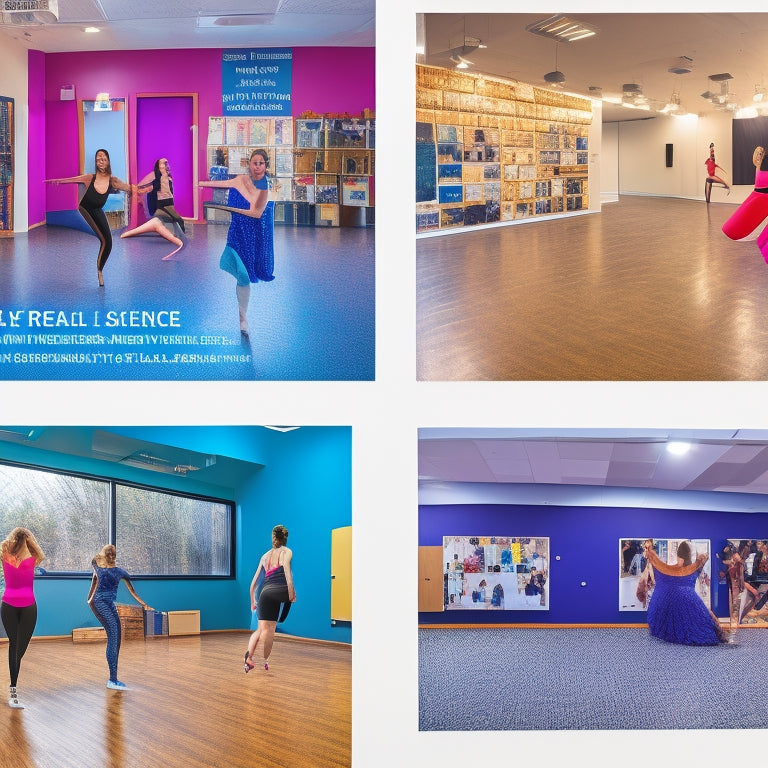
School of Dance Revolutionizes Curriculum and Inclusivity
Share
The School of Dance has initiated a groundbreaking transformation, revolutionizing its curriculum and fostering a culture of inclusivity by intentionally integrating diverse perspectives, expanding its faculty, and enriching its course offerings to empower students from all backgrounds. The revised curriculum incorporates a diverse range of voices and perspectives, promoting equity and diversity. Inclusive practices, such as providing skin-toned attire and guidance, create a welcoming environment. By integrating non-Western perspectives and studying overlooked Black choreographers, the School of Dance is redefining the art form. As we continue to evolve, discover the exciting developments shaping the future of dance education.
Key Takeaways
• The School of Dance has transformed its curriculum to include diverse voices and perspectives, enhancing student engagement and inclusivity.
• The Dance History II course now features Black dancers and choreographers, as well as study units on overlooked Black choreographers.
• The school promotes equity and diversity through faculty diversification and inclusive practices, such as providing skin-toned attire options.
• The curriculum integrates non-Western perspectives, female composers, and diverse choreographers, creating a rich tapestry of artistic expression.
• The school fosters a culture of inclusivity, empowering students from diverse backgrounds to express themselves through various artistic mediums.
Curricular Innovations and Expansions
Building on a foundation of inclusivity, the school's curriculum has undergone a transformative overhaul, incorporating a diverse range of voices and perspectives to provide a richer, more nuanced dance education.
Course enhancements have been implemented to foster deeper student engagement, including the addition of Black dancers and choreographers to the Dance History II course and the inclusion of study units on overlooked Black choreographers.
This curriculum evolution has sparked significant artistic growth, as students are now exposed to a broader spectrum of influences and perspectives.
The revamped curriculum has also led to increased student engagement, as students are able to see themselves reflected in the course material, leading to a more inclusive and empowering learning environment.
Inclusive Practices and Initiatives
How can a dance institution foster a culture of inclusivity, and what initiatives can be implemented to make certain that students from diverse backgrounds feel seen, heard, and empowered?
The School of Dance has taken significant steps towards creating inclusive environments that promote equity and diversity. By diversifying its faculty, guest artists, and curriculum, the institution has established a foundation for inclusive practices.
The Dance Costume Shop has also taken strides in providing skin-toned attire and guidance on purchasing inclusive garments. Moreover, the school's equity initiatives have led to the integration of non-Western perspectives, female composers, and diverse choreographers into the curriculum.
These efforts have cultivated a culture of inclusivity, empowering students from diverse backgrounds to thrive and express themselves authentically.
Diverse Perspectives and Representation
Through its intentional integration of diverse perspectives and representation, the School of Dance has created a rich tapestry of artistic expression, where students can engage with a wide range of voices, styles, and cultural influences.
By incorporating diverse voices, the school has guaranteed that students are exposed to a broad spectrum of artistic expression, fostering a deeper understanding of the complexities of dance. The inclusion of Black dancers and choreographers in the Dance History II course, as well as the study of overlooked Black choreographers, has enriched the curriculum, providing a more inclusive understanding of the art form.
This dedication to representation in dance has empowered students to explore their own unique perspectives, promoting a culture of inclusivity and artistic freedom.
Frequently Asked Questions
What Is the Average Student-To-Faculty Ratio in the School of Dance?
"A thousand minds ignited, the School of Dance boasts an impressive 7:1 student-to-faculty ratio, fostering intimate Faculty dynamics and adaptable Classroom layouts that ignite creativity, ensuring each student receives personalized attention, empowering them to take center stage."
How Many Dance Styles Are Offered as Electives for Students?
Our diverse elective offerings include over 15 dance styles, featuring Genre Exploration courses in Afro-Fusion, Hip-Hop, and Latin Jazz, as well as Cultural Fusion classes blending traditional and contemporary styles, empowering students to explore and express themselves freely.
Are There Any Plans to Introduce Online Courses in the School of Dance?
"We're excited to explore virtual classrooms, enabling remote rehearsals and expanded accessibility for students worldwide, fostering a global dance community that celebrates diversity and promotes artistic freedom."
Can Students Minor in Dance if They're Not Dance Majors?
With 75% of non-dance majors expressing interest in dance courses, students can indeed minor in dance, leveraging interdisciplinary approaches to reap holistic benefits that transcend traditional boundaries, fostering a more inclusive and diverse dance community.
Are There Any Job Placement Services for Graduating Dance Students?
Our dedicated career services team offers personalized career coaching, leveraging our robust alumni network and industry connections to provide professional mentorship, resume building, and job placement support, empowering graduating dance students to thrive in their careers.
Related Posts
-

7 Ways Online Courses Boost Dance Business Success
By offering online courses, you can revolutionize your dance business, boosting visibility, credibility, and profitab...
-

Affordable Costume Boots for Every Occasion
When you're on the hunt for affordable costume boots, you're in luck! These trendy styles are perfect for any occasio...
-

Unlocking Showmanship Secrets: Pole Dance Competition Mastery
You're about to discover the secrets to pole dance competition mastery, where a cohesive narrative, not just tricks, ...


